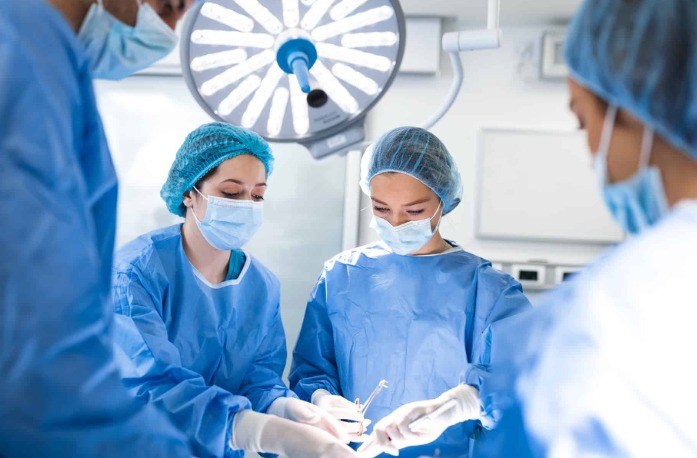How Biopsy Costs Vary and What Factors Influence the Price

A biopsy is simply a way to take a small sample of tissue or cells so specialists can examine it under a microscope. It helps confirm or rule out conditions ranging from infections and autoimmune diseases to cancers.
While the test itself is common, the biopsy test price you receive can look very different from someone else’s, even if both of you had the same procedure in theory. That’s because the word covers many techniques, tools, and care settings. Understanding what you’re paying for, and why, brings clarity at a time you’re already juggling appointments and emotions.
What Exactly is a Biopsy?
A biopsy is the removal of a small piece of tissue or a collection of cells for laboratory study. There are many ways to do it, for instance:
Types of Biopsy Procedures
A main factor which influences the cost of biopsy is the type, this is because different techniques and tools are used for different types of biopsy procedures.
- Fine Needle Aspiration (FNA): A thin needle is used to draw out fluid and cells from a suspicious area.
- Core Needle Biopsy: A larger needle with a cutting edge is used to remove a small cylinder of tissue.
- Vacuum-Assisted Biopsy: A vacuum device is used to suction out a larger tissue sample through the needle.
- Image-Guided Biopsy: Imaging techniques like CT, MRI, or ultrasound are used to guide the needle to a hard-to-reach spot.
- Open Biopsy: A doctor makes an incision to surgically remove all or part of a suspicious area.
- Excisional Biopsy: The entire suspicious area is removed, often with a scalpel.
- Shave Biopsy: A thin layer of skin is removed with a blade for conditions like basal cell or squamous cell skin cancers.
- Punch Biopsy: A small, circular tool is used to remove a cylinder of tissue, often used for skin conditions.
- Endoscopic Biopsy: An endoscope is inserted into the body to see the inside of an organ, and tiny tissue samples are collected using forceps. This can be used in areas like the gastrointestinal tract or bladder.
Why Do Biopsy Costs Vary So Much?
The technique, body site, guidance method (imaging or not), anesthesia, hospital setting, and the complexity of lab analysis all add up. Below are more factors which affect the price:
1) Where in the body the sample is taken from
Skin and superficial lumps are usually easier and less expensive to sample. Deep organs (lung, liver, prostate) may require an endoscope or image guidance (ultrasound/CT/MRI), increasing the price due to the imaging suite, specialist time, and disposables.
2) Image guidance and facility charges
An ultrasound-guided biopsy often adds a modest premium; CT-guided biopsies can add more, because they need a CT scanner, radiology staff, and additional safety protocols. Real-world pricing pages show CT-guided procedures sitting at the higher end of the spectrum compared with unguided or simple needle biopsies.
3) Anesthesia and day-care vs. inpatient
Most needle and skin biopsies use local anesthesia and are done as day-care. Surgical biopsies sometimes need regional or general anesthesia and a short hospital stay, which increases costs. Reputable clinical explainers note that surgical biopsies may require an operating room and recovery time.
4) The laboratory work behind the scenes
The “lab bill” can include basic histopathology, special stains, immunohistochemistry (IHC), and when needed, some molecular tests. If additional markers are requested after the initial report, add-on charges appear. Consumer-facing cost guides in India explicitly list histopathology, IHC, and molecular testing as items that push the total upward.
5) City and facility level
Tier-1 metros and tertiary centres usually charge more than smaller towns due to higher operating expenses and availability of advanced imaging. This geographic spread is reflected in Indian price guides that compare metros to other cities.
Cost of Biopsy (Different Types)
These are broad ranges reported by trusted sources. Individual facilities may quote outside these bands based on the factors above.
- Fine-Needle Aspiration (FNA/FNAC): ₹1,000 – ₹5,000.
- Core-Needle Biopsy (e.g., breast/soft tissue): ₹3,000 – ₹10,000.
- Skin Punch or Shave Biopsy: ₹3,000 – ₹9,000.
- Endoscopic Mucosal Biopsy (via scope): ₹6,000 – ₹10,000+.
- Ultrasound-Guided Needle Biopsy: ₹10,000 – ₹16,000 (includes imaging)
FAQs
Do guided biopsies cost more?
Yes, because you’re paying for imaging equipment and a specialized team on top of the needle procedure. Ultrasound adds a smaller margin; CT guidance is costlier owing to scanner time and radiation-safety protocols.
Is a surgical biopsy always necessary?
No, doctors reserve surgical biopsies for situations where needles or scopes can’t safely reach the target, or when earlier results are inconclusive. Surgical biopsies may need anesthesia and an OT slot, which affects the bill.
Is a biopsy painful?
Most patients feel brief stinging from the local anesthetic and some soreness later. Pain is generally mild and controlled with simple pain relievers. Serious complications are uncommon.
How long do results take?
Standard reports often arrive within a few days to two weeks. If special stains or molecular tests are needed, it can take longer.
What if my doctor asks for additional tests on the same sample?
That’s common. After the first look, pathologists may order immunohistochemistry or molecular tests to make the report more precise. These add to cost and time but help guide treatment.
Conclusion
Biopsy costs vary because “biopsy” isn’t a single procedure, it’s a spectrum. The final bill reflects the method (needle, endoscopic, or surgical), the body site, whether imaging is needed, the type of anesthesia, and the depth of laboratory analysis (from basic histopathology to IHC or molecular tests).
City-to-city differences and lab quality systems also play a role. To plan wisely, ask for a written estimate that separates the procedure, imaging, anesthesia, and lab components; check if your insurance or a public scheme covers it; and prioritise reliable labs with strong quality standards to avoid repeat testing.



